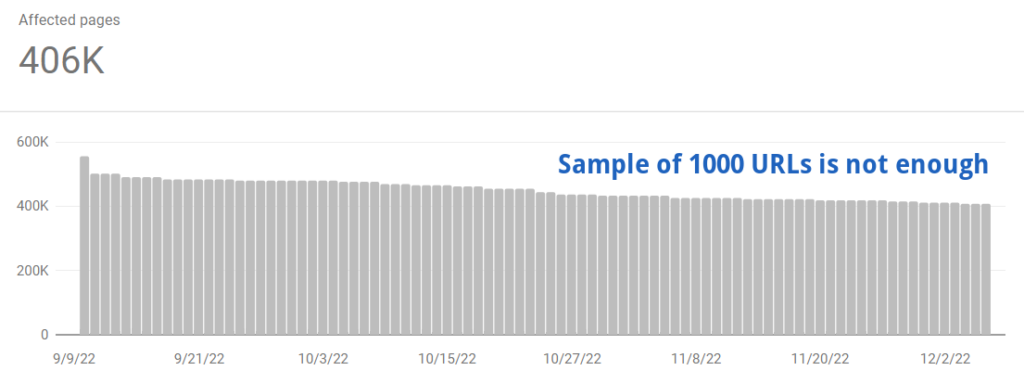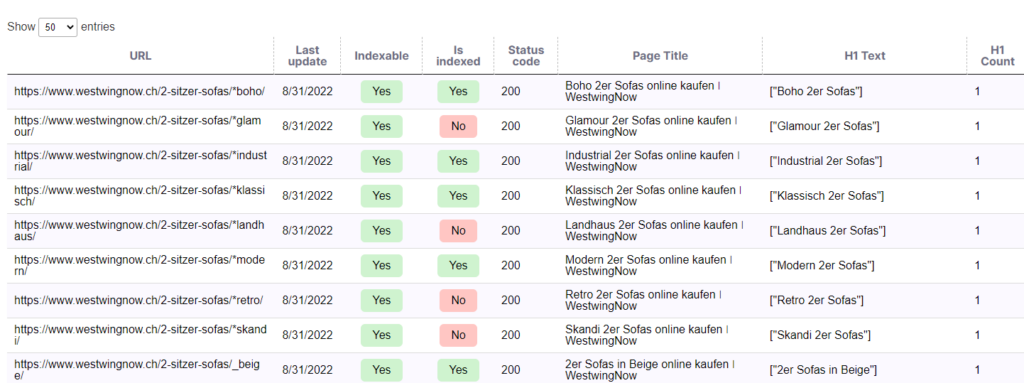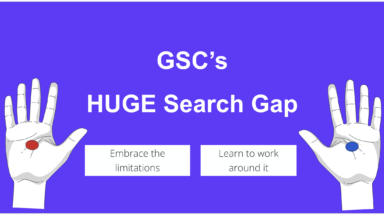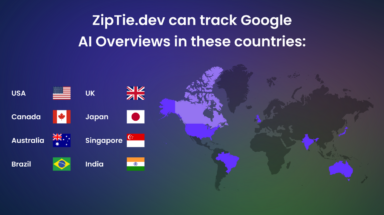People frequently ask us about the differences between ZipTie.dev and the indexing reports provided by Google Search Console (GSC). While GSC is a useful tool, it has limitations that can make it challenging to use for certain tasks. Here are five ways in which GSC might fall short:
GSC Doesn’t Show all Unindexed URLs
GSC’s indexing reports such as “Crawled currently not indexed” or “Discovered currently not indexed” only display up to 1000 URLs.

This might be enough for small websites, but for larger ones dealing with thousands or even millions of unindexed URLs, it’s insufficient.

In contrast, ZipTie.dev provides a comprehensive list of all unindexed URLs. This allows you to:
- Identify patterns in the unindexed URLs.
- Prioritize pages based on their significance to your business, a task that’s challenging when dealing with a limited number of URLs.
Lack of Detailed Information in GSC
GSC provides scant information about a particular URL; it doesn’t even display the title. Picture this: Google de-indexes 30% of your pages. When you go to GSC to pull up a sample of pages, you’re uncertain about their business relevance. You have to download a sample and run it through your SEO crawler, such as Screaming Frog, to glean more information. This process is time-consuming and inconvenient.
In contrast, ZipTie.dev provides detailed information about URLs. If you need more insights, you can easily export a detailed CSV file or click on ‘See Details’ to view things like:
- page title
- H1
- meta description
- word count
- image count
- response time

- GSC Doesn’t Specify which URLs were Recently Deindexed
Consider this scenario: your business is experiencing a drop in traffic, and you notice that Google has deindexed 30% of your URLs. However, GSC doesn’t specify which URLs were deindexed due to its 1000 URL limit.
But there’s a solution! ZipTie provides Index Monitoring, allowing you to easily compare data between two indexing checks and identify the exact list of URLs that Google has deindexed. This knowledge is the first step towards addressing indexing issues.
Below you can see screenshots of how it works. As you can see, the website encountered a massive indexing drop near the date of the Google Spam update.

Then you can see the exact list of URLs that were deindexed by Google, as presented in the screenshot below:

Knowing which URLs got deindexed is the first step to fixing indexing problems.
4. GSC Reports many Irrelevant URLs
It’s frustrating when you see that 30% of your URLs aren’t indexed, but you don’t know how many of these are actually valuable to your business. GSC tends to report URLs with parameters and random URLs that Google has discovered, which aren’t always useful.
With ZipTie, you can precisely check the indexing status of your URLs. You can export a full list of unindexed URLs and then:
- Filter URLs for an easy analysis of specific page types, such as product pages.
- Exclude URLs with parameters.
- Use the URL list mode to check the indexing status of URLs that are specifically valuable to your business.
| Random URLs Google Search Console reports | ZipTie’s check |
| example.com/products?refid=45454example.com/products?refid=43434343example.com/products?refid=5454445example.com/products?refid=6636example.com/products?refid=45454example.com/products?refid=45454 | example.com/products/product1example.com/products/product2example.com/products/product3example.com/products/product4example.com/products/product5example.com/products/product6 |
5. GSC Provides Outdated Information
Often, when we inspect URLs reported as “not indexed” in GSC, we find that they are, in fact, indexed. This is because GSC sometimes shows outdated information in their Index Coverage section.
Let me show you an example from Onely.com. Here, Google Search Console reported the following URL: https://www.onely.com/blog/difference-between-featured-snippets-and-rich-results-explained/ as “crawled – currently not indexed”.

When I clicked on “URL inspection” it turned out that the URL is indexed.

I double-checked it using the “site” command – it was clear that the page is indexed in Google.

Google was just showing outdated information in their Index Coverage section.
Wrapping up
Indexing issues are becoming increasingly common and affect all kinds of websites, from small personal blogs to large e-commerce platforms. I’ve highlighted five main reasons why relying solely on GSC isn’t enough to address these issues.
Don’t waste time trying to tweak suboptimal indexing in GSC. Use ZipTie to take control of your indexing, save time, enhance SEO, and help you effectively solve your indexing problems.






